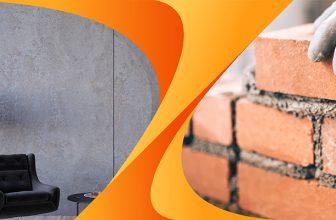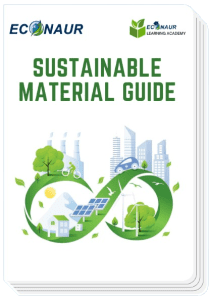Understand all about Disinfection and its properties
“DISINFECTION” has proved it’s importance in the current world scenario. Almost everyone has a good understanding of disinfection Disinfection Hygiene Covid and it’s mechanisms due to the plethora of information floating around on the social media.
There are two basic methods of disinfection-
1. Dissolving the pathogenic micro-organism using strong solvents like alcohol or soap
2. Oxidising (much-localised burning / disintegrating) the pathogenic micro-organism.
The first method of dissolving the outer walls of the pathogenic micro-organisms is well applicable and can be put to use by application of hand sanitizers, soaps, etc. However, this method is not useful on surfaces prone to frequent contamination. As the soap needs water flush after dissolving the pathogen or a sanitizer will / may need a wipe to remove the remains of the disintegrated leftovers on the surfaces which may not be always possible.
To resolve this for disinfection of surfaces and contact points like handles etc. It is recommended to use oxidisers as disinfectants.
There are many known oxidisers been used for the disinfection processes depending on applications. Chlorine, Ozone, Sodium hypochlorite, Chlorine Di-Oxide, even non-chemical methods of disintegrating the pathogens like UV and IR also used many times, especially for water purification.
While having a cup of tea with a teabag type process Harshad Bhide and Vaibhav Raut, enthusiastic entrepreneurs, struck with an idea of creating something very unique in the present pandemic situations which will be easy to transport, making it very easily ready to use a product from the least nature harming disinfectant.
- The solution made as shown above is meant for surface disinfection only and not for human body disinfection.
- The concentration in 500 ml water when freshly made will be about 1000ppm
- A good range for disinfection is said to be 250ppm to 1000ppm
- The CLO2 is sensitive to UV, Hence keep it away from direct sunlight otherwise, the concentration depletes rapidly.
- You can use the mixture for up to 4-5 days from the day of preparation as the concentration will drop at about 50 ppm per 24 hours.
- Do not allow children to handle it though it is not toxic, can cause irritation to eyes and nose.
Ooops, least nature harming disinfectant???
I am not an expert in the chemistry of it so tried searching through the “Google world” to know more about it before we offer it to customers. And the following is what I came across in different knowledge bases-
“When compared with other oxidising biocides, Chlorine Dioxide has a significantly lower oxidation strength – this means that it reacts with fewer compounds, such as organic compounds and ammonia, yet is strong enough to attack the disulphide bonds found in the membranes of bacteria and other biological material. Chlorine dioxide will not react with many organic compounds, and as a result ClO2 does not produce environmentally dangerous chlorinated organics such as THMs and HAAs are not produced as a result of disinfection using chlorine dioxide. This process of “selective oxidation” allows the Chlorine Dioxide biocide to be targeted where it is needed most, disinfecting areas quickly”
It is important to note that the disinfection by-products’ of chlorine dioxide are easily manageable and do not present nearly the same scale of the problem as found with other biocides with a higher oxidation potential.
So we decided to use the Chlorine di-oxide as disinfectant agent. WHY?
How Chlorine Di-Oxide acts? Getting a bit technical…
Compounds within the cells and on the surface of cell membranes that contain oxidisable material react with chlorine dioxide, causing cell metabolism to be disrupted. Chlorine dioxide also reacts directly with disulphide bonds in the amino acids and the RNA in the cell. Unlike non-oxidizing disinfectants, chlorine dioxide kills microorganisms even when they are inactive. The oxidative load placed on the cells by the action of chlorine dioxide mean that most microorganisms are unable to build up resistance to chlorine dioxide.
How Chlorine Di-Oxide is made?
NaClo2+Acid = CLO2
While chlorine dioxide has “chlorine” in its name, its chemistry is radically different from that of chlorine. Chlorine and chlorine dioxide are both oxidising agents (electron receivers). However, chlorine has the capacity to take in two electrons, whereas chlorine dioxide can absorb five.
Chlorine dioxide can be used as oxidizer or disinfectant. It is a very strong oxidizer and it effectively kills pathogenic microorganisms such as fungi, bacteria and viruses.
Chlorine dioxide is a chemical compound with the formula ClO2 that exists as yellowish-green gas above 11° C, a reddish-brown liquid between −59° C and 11° C, and as bright orange crystals when colder. It is an oxidizing agent, able to transfer oxygen to a variety of substrates, while gaining one or more electrons via oxidation-reduction.
ClO2 has been approved in most countries for use in drinking water and in large industrial processes is rapidly replacing chlorine. The generation of gaseous chlorine dioxide (ClO2) is one of several techniques available for the remediation of structures impacted by microbial growth (US EPA 2007). ClO2 can destroy all manner of microorganisms, including bacteria, spores, fungi, viruses, and even protozoan’s (Taylor and Butler 1982; Chen and Vaughn 1990; Sivaganesan et al. 2003; Loret et al. 2005). Gaseous ClO2 has been approved by the US EPA as a disinfectant, sanitizer and sterilant for the paper, fruit, vegetable, dairy, poultry, and beef processing industries (US EPA 2000), and for the processing of industrial wastewater (Lee et al. 2006).
Various experimental studies have confirmed the efficiency of ClO2 in deactivating Bacillus endospores. (surrogates for B. anthracis spores) (Buttner et al. 2001; Young and Setlow 2003; Cortezzo et al. 2004).
“Reference Wikipedia: Chlorine dioxide has many applications as an oxidizer or disinfectant. Chlorine dioxide can be used for air disinfection and was the principal agent used in the decontamination of buildings in the United States after the 2001 anthrax attacks. After the disaster of Hurricane Katrina in New Orleans, Louisiana, and the surrounding Gulf Coast, chlorine dioxide was used to eradicate dangerous mold from houses inundated by the floodwater.
In addressing the COVID-19 pandemic, the U.S. Environmental Protection Agency has posted a list of many disinfectants that meet its criteria for use in environmental measures against the causative corona virus. Some are based on sodium chlorite that is activated into chlorine dioxide.”
In practical terms however, few bacteria live alone, and they are most often found in water and on surfaces in the form of a “biofilm” which is a close association of many millions of bacteria. Many biocides have particular problems in penetrating this biofilm, due to the polysaccharide “glue” that is secreted by bacteria such as Pseudomonas to hold the biofilm together. Unlike most biocides, chlorine dioxide can effectively penetrate the polysaccharide layer of biofilm without being used up in reacting with the inert sugars. This allows the ClO2 to act on the bacteria themselves, destroying the biofilm.
“Science Direct Paper: Chlorine dioxide was found to increase the permeability of outer and cytoplasmic cell membranes and consequently resulting in the release of vital nuclear materials which strongly correlated with loss of cell activity or death.”
For more information or queries explore more here
Reference:
https://www.scotmas.com/chlorine-dioxide/how-does-clo2-kill-bacteria.aspx
https://en.wikipedia.org/wiki/Chlorine_dioxide
https://www.sciencedirect.com/science/article/abs/pii/S2214714418302836








